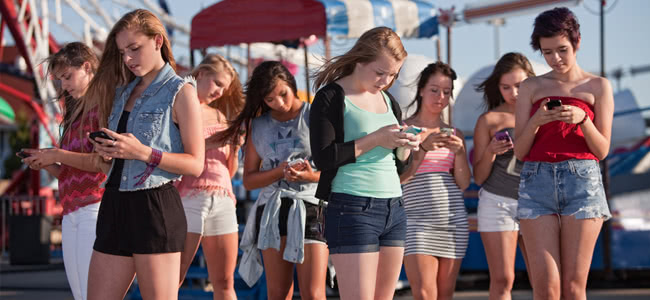Some astute readers will remember the controversy that erupted in the lead up to this year’s Splendour In The Grass festival. After organisers warned Telstra users that their coverage would be limited whilst roaming around the festival grounds, the telco committed to supplying Splendour with the infrastructure necessary for adequate coverage.
Typically, festivals in Australia are provided with Cell on Wheels (COW) towers by each individual mobile service company in order to expand network coverage and capacity during large events which see 90,000 people gathered in one small area, often in rural areas with already limited coverage.
Trouble arises when the COWs still fail to provide adequate coverage or when a provider does not offer the necessary towers to a festival, as Splendour organisers initially claimed Telstra did. However, according to a recent report from Billboard, where cell towers fail, a new app called Firechat succeeds.
First coming to attention during this year’s Burning Man, then during Hong Kong’s recent protests, Firechat allows users to send and receive messages even when no cellular phone coverage or even an internet connection is available, instead utilising a phone’s Bluetooth and WiFi capabilities.
[include_post id=”410698″]
Firechat works by creating what’s called a “mesh network” of connected phones. The mesh networks operate by allowing device A to deliver a message to device D by hopscotching through devices B and C to get there, totally free of a cell network, effectively turning the routing phones into mini-cell towers.
Recently, Open Garden, the San Francisco-based startup that developed the app, took the leap into the live entertainment big time by incentivising artists who performed at the two-day Bacardi NH7 Weekender in India to use the app to interact with their fans.
“I am excited that Bacardi NH7 Weekender will be the first festival to enable live interaction through Firechat. It is a great tool for artists to interact with fans and we don’t have to worry about traditional networks failing as they tend to do when large crowds are present,” said Vijay Nair, CEO of festival promoters Only Much Louder.
During the Bacardi NH7 Weekender’s fifth year as one of the largest music festivals in India, the tens of thousands of punters who attended were able to share a common digital space to schedule meet-ups and rides without having to wear down their cell phone batteries by trying to repeatedly push through unsent messages.
[include_post id=”425680″]
“Hong Kong or Burning Man are both examples of situations where people either have or expect to have no connectivity whatsoever or patchy/unreliable internet/cell phone coverage,” said Open Garden’s CMO Christophe Daligault. “In fact, we had a big jump yesterday in Mexico, where Firechat jumped to No. 7 on iTunes because of the student protests.”
While the principles behind Firechat are still in their infancy, recent improvements in phone technology have already seen the technology grow at an exponential rate. Just a few years ago, a mesh networking app like Firechat, particularly in its current form, would not have been possible.
One limitation of the technology used to be a lacking density of smartphones that would be required to create a functioning mesh network, in addition to the limited range afforded by Bluetooth. iPhones and Android devices also did not communicate with one another as well as they do today.
Now Bluetooth and peer-to-peer WiFi can reach distances of 40 to 70 yards, and by utilising these improved capabilities with the same hardware your phone uses to connect to a wireless network, Firechat can create a network out of thin air.



































